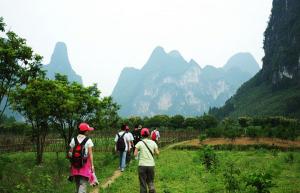Tibetan Opera & Drama
The Tibetan opera is one of the oldest drama forms among China's minority nationalities. For hundred of years it has been performed in Tibet as well as in Sichuan, Qinghai, Gansu and Yunnan provinces wherever there are large communities of Tibetans. Tibetan arts are just as appealing as Tibet scenery attractions.
Its origins may be traced to the 8th century when the Tibetan king Chisongdezan (742 - 797), a devout Buddhist, invited the eminent Indian monk Padma Sambhava to preach and teach in Tibet. In 779, Padma Smbhava composed a ritual "sorcerer's dance" to greet the completion of Samye Monastery. Based on a story from the Buddhist sutras, it embodied local folk dance movements and was performed to exorcise evil spirits and propitiate the gods through a kind of pantomime. It is considered as the precursor of Tibetan opera.
From Rite to Art
Some six centuries later a lama called Tangdong Jyalbo (1385 - ?), put on performances of this dance to raise funds to build a bridge. To make it more interesting and religiously instructive, he interlaced the original form with episodes from folk tales and the Buddhist sutras. This dramatization, in which songs were added to dance, gained immense popularity among the local people. Hence Tangdong Jyalbo became known as the founder of Tibetan opera.
Later still, the fifth Dalai Lama (1617 - 16882) decreed that Tibetan opera should be performed separately from religious services. Thus it became an independent art form. Although linked to religion in its birth and development, it was rooted in the people and their life. The melodies used by Tibet's earliest operatic ensemble, the Bundunba (Seven Sisters) Troupe, were very similar to those of the folk songs known as "Xaiqen" (see Tibetan Folk Songs). The instrumental music is closely related that of the Tibetan tap-dances, drinking songs and gorxai (round) dances. Of the dances movements (see Tibetan Dances), many originated from the people's everyday experience. This may explain why Tibetan opera has survived, with unchanged popularity, for centuries.
Staging and Structure
Performances used to be given in the open to the accompaniment only of a drum and a pair of cymbals (See Tibetan Drums). The melodies, high-pitched and resonant, were sung with choral backing, giving an effect both robust and harmonious.
Each traditional opera consisted of three parts: The Doin, the Xong and the Zhaxi. In the Doin, or prologue, a narrator called the Ngoinba (hunter, or fisherman) first offered prayers of thanks to the plot and the characters, often to the accompaniment of dance movements.
The main body of the opera was called the Xong. The performers came out and stood in a circle. The performance master, usually the same person as the Ngoinba, explained the plot, scene, setting, characterizations and lyrics in a rhymed monologue. At appropriate points in the story, the appropriate actor would leave the circle his or her lines, then return to the circle and dance or do acrobatics with the others. This alternation went on till the end of the show, which could last anywhere from two or three hours to three days, at the discretion of the performance master.
The last part was the epilogue, or Zhaxi, which in Tibetan means blessing or good augury. Singing benedictions, the performers did a joyous dance, and then presented the audience with hadas (ceremonial silk scarves) to conclude the performance.

.jpg) Chinese Food Culinary Tours
Chinese Food Culinary Tours China Hiking & Trekking Tours
China Hiking & Trekking Tours .jpg) China Heritage & Culture Tours
China Heritage & Culture Tours 




